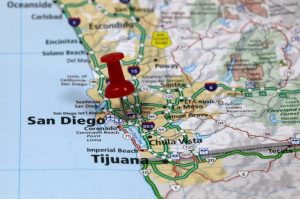
This is due to hedge accounting tends to be complicated and require a high level of skill and knowledge in accounting. This combination of inquiries, observations, and inspections allows us to understand where the risk of material misstatement is highest. Too often auditors continue doing the same as last year (commonly referred to as SALY)–no matter what.
Audit Risk Model Calculation and Example

This is the risk that a material misstatement will not be prevented or detected by a company’s internal controls. Instead, it is influenced by the design and effectiveness of the company’s control environment, including the tone at the top, control activities, and monitoring. The auditor should also assess audit risks at the time they prepare the audit plan. Normally, this is done by using a control framework like COSO to assess all angles of the business process.
Why is audit risk so important to auditors?
- For example, the merchandising company’s financial reporting might be easier to audit than financial reporting in agriculture or oil.
- Similar to inherent risk, auditors cannot influence control risk; hence, if the control risk is high, auditors may need to perform more substantive works, e.g. test on a bigger sample, to reduce the audit risk.
- A set of adjusted risk definitions, all reflecting the exposure dimension, is considered.
- In addition, it may include inventory or revenue recognition and ongoing communication and collaboration with company management to ensure the audit is conducted effectively and efficiently.
- Let’s assume you already have a better understanding of audit risks and let’s check the above if you are still not sure.
- Inherent risk (IR) is the susceptibility of an account balance or class of transactions to material misstatement, assuming there are no related controls.
It’s important to keep in mind that these financial statements aren’t always complete or accurate. Outlining potential risks using an audit risk model helps you minimize issues like material misstatement and others. Understanding an entityISA 315 gives detailed guidance about the understanding required of the entity and its environment by auditors, including the entity’s internal control systems.
Audit Risk – Definition, Formula and Models
But the auditors may fail to detect frauds due to nature of the transaction or limited timing of te audit procedure. Organizations must have adequate internal controls in place to prevent and detect instances of fraud and error. Control risk is considered to be high where the audit https://www.bookstime.com/blog/accounting-for-technology-companies entity does not have adequate internal controls to prevent and detect instances of fraud and error in the financial statements.
What Is The Audit Risk Model?
The % of substantive assurance required can be used to define the “confidence level” in statistical sampling to determine the sample size for substantive tests. The sample size can be calculated using statistical formulas/tables or audit software (e.g. AuditSampler). Paragraph 13(c), ISA 200, Overall Objectives of The Independent Auditor, “Audit risk is a function of the risks of material misstatement and detection risk“. The paper intends to present some aspects of evaluating various dimensions of risks as they are necessary to be estimated in the auditing process.
Control Risks
For the purposes of the F8 exam, it is important to understand that audit risk is a very practical topic and is therefore examined in a very practical context. Students must also be prepared to apply their understanding of audit risk to questions and come up with appropriate risk assessment procedures. Detection Risk is risk of auditors being unable to detect material misstatements in the financial statements of the company. This risk mainly occurs in the case where auditors’ methods or procedures is insufficient to detect the existing shortcomings of the financial statements. In other audit risk formula words, detection risks mainly occur because of the inefficacy of the stated financial statements. Control Risks are the risks that exist within the company because of the lack of internal controls present within the company.

Audit Risks & Business Risks
Strategic Comprehensive Planning stands at the forefront of this endeavor, serving as the blueprint that guides auditors through the audit lifecycle. It involves carefully aligning the audit’s objectives with the assessed risks, ensuring that efforts are concentrated where they are most needed. This planning phase is critical for the efficient allocation of resources, ensuring that audit teams are equipped and prepared to tackle the areas of greatest concern. Conversely, a low detection risk score points to a lower likelihood of catching errors.
Assess the Risk of Material Misstatement
In this study, over thirty key risks were identified, in the operational and strategic area, which is related to the taking of immediate action. The final stage of the paper includes preparation of control mechanisms allowing for minimisation or elimination of the discovered risks. Secondly, as far as Detection Risk is concerned, it is the inability of the audit procedures to detect QuickBooks a material misstatement in the accounts of the organization. This risk is also very detrimental from the long term perspective of both, the auditor, as well as the organization. Therefore, an active effort should be made in order to reduce this particular risk.
How To Reduce?

For example, the firm just won the new big construction company and most of the audit team member including manager and partner are new to the construction company. In this case, the detection risks are high and the change that auditor find mistrial misstatements are really low. The company’s goal is to create financial statements without material misstatement. Going deeper, auditors can leverage automation tools to help set up audit procedures that are standardised, repeatable, and supervisable.

Leave A Comment